
Alaska is a non-contiguous U.S. state on the northwest extremity of North America. It borders the Canadian province of British Columbia and the Yukon territory to the east; it shares a western maritime border in the Bering Strait with Russia's Chukotka Autonomous Okrug. The Chukchi and Beaufort Seas of the Arctic Ocean lie to the north and the Pacific Ocean lies to the south. Technically a semi-exclave of the U.S., it is the largest exclave in the world.

Frances Ann "Fran" Ulmer is an American administrator and Democratic politician from the U.S. state of Alaska. She served as the seventh lieutenant governor of Alaska from 1994 to 2002 under Governor Tony Knowles, becoming the first woman elected to statewide office in Alaska, and lost the 2002 gubernatorial election against Republican Frank Murkowski. In 2007 she became the Chancellor of the University of Alaska Anchorage (UAA), before serving as Chair of the United States Arctic Research Commission between 2011 and 2020, appointed by President Barack Obama.
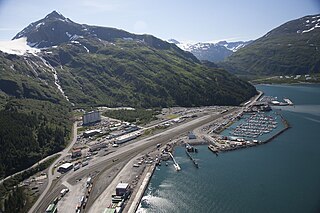
Whittier is a city at the head of the Passage Canal in the U.S. state of Alaska, about 58 miles (93 km) southeast of Anchorage. The city is within the Chugach Census Area, one of the two entities established in 2019 when the former Valdez–Cordova Census Area was dissolved. It is also a port for the Alaska Marine Highway. The population was 272 at the 2020 census, having increased from 220 in 2010.

The 1964 Alaskan earthquake, also known as the Great Alaskan earthquake and Good Friday earthquake, occurred at 5:36 PM AKST on Good Friday, March 27. Across south-central Alaska, ground fissures, collapsing structures, and tsunamis resulting from the earthquake caused about 131 deaths.
Structural engineers analyze, design, plan, and research structural components and structural systems to achieve design goals and ensure the safety and comfort of users or occupants. Their work takes account mainly of safety, technical, economic, and environmental concerns, but they may also consider aesthetic and social factors.
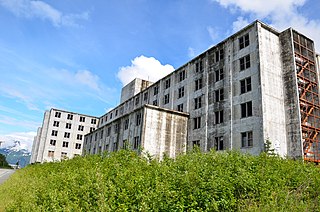
The Buckner Building is an abandoned former U.S. military building in Whittier, Alaska, on the Western edge of the Prince William Sound.

Fort Richardson is a United States Army installation in the U.S. State of Alaska, adjacent to the city of Anchorage. In 2010, it was merged with nearby Elmendorf Air Force Base to form Joint Base Elmendorf-Richardson.

Nathan Mortimore Newmark was an American structural engineer and academic, who is widely considered one of the founding fathers of earthquake engineering. He was awarded the National Medal of Science for engineering.
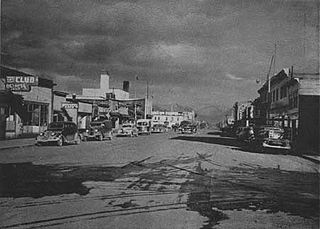
After congress approved the completion of the Alaska Railroad from Seward to Fairbanks in 1914, it was decided that a new town should be built as a port and rail hub along the route. The decision was made to develop a site near Ship Creek on Cook Inlet. Survey parties visited the area in 1914 and researched possible routes for the rails and options for siting the new town. Anchorage was originally settled as a tent city near the mouth of Ship Creek in 1915, and a planned townsite was platted alongside the bluff to the south. Anchorage was mostly a company town for the Alaska Railroad for its first several decades of existence.
A building inspection is an inspection performed by a building inspector, a person who is employed by either a city, township or county and is usually certified in one or more disciplines qualifying them to make professional judgment about whether a building meets building code requirements. A building inspector may be certified either as a residential or commercial building inspector, as a plumbing, electrical or mechanical inspector, or other specialty-focused inspector who may inspect structures at different stages of completion. Building inspectors may charge a direct fee or a building permit fee. Inspectors may also be able to hold up construction work until the inspection has been completed and approved.
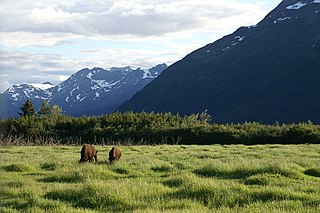
Anchorage, officially the Municipality of Anchorage, is the most populous city in the U.S. state of Alaska. With a population of 291,247 at the 2020 census, it contains nearly 40 percent of the state's population, and has more people than all of Northern Canada and Greenland combined. The Anchorage metropolitan area, which includes Anchorage and the neighboring Matanuska-Susitna Borough, had a population of 398,328 in 2020, accounting for more than half the state's population. At 1,706 sq mi (4,420 km2) of land area, the city is the fourth-largest by area in the U.S.
Henry John Degenkolb was an internationally known, American structural engineer in San Francisco, California, noted for his many contributions to earthquake engineering. In addition to providing the structural designs for many San Francisco Bay Area buildings, he chased earthquakes to share lessons with the profession and served as President of the Earthquake Engineering Research Institute (EERI).
The National Council of Structural Engineers Associations (NCSEA) is a professional association in the United States, with member organizations in 44 states. NCSEA was established in 1993. As of 2003, NCSEA represented 12,000 individual engineers, who are members of local state associations.

The 144th Airlift Squadron is a unit of the Alaska Air National Guard 176th Wing located at Joint Base Elmendorf-Richardson, Anchorage, Alaska. The 144th is an associate unit of the active 517th Airlift Squadron, equipped with the C-17 Globemaster III.

Evangeline Atwood (1906–1987) was an American historian, activist, and philanthropist. She was the co-founder of numerous organizations in Alaska, including the Alaska Statehood Association, the Anchorage League of Voters, the Alaska World Affairs Council, Parent-Teacher Council of Anchorage, and the Cook Inlet Historical Society. She was awarded Historian of the Year by the Alaska Historical Society in 1975. In 2009, she was named to the Alaska Women's Hall of Fame. Her husband was Robert Atwood and was the co-owner, alongside him, of the Anchorage Times.
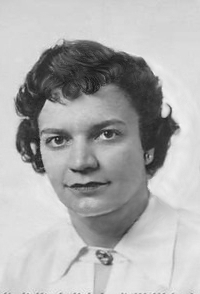
Ruth Anna Marie Schmidt was an American geologist and paleontologist who was a pioneer for women scientists. She spent most of her career in Alaska, where she established a United States Geological Survey (USGS) field office and established the first Department of Geology at the Anchorage Community College, now part of the University of Alaska Anchorage. In 1964, Schmidt directed the initial assessment of the damage done to the city of Anchorage by the Great Alaska Earthquake, the largest earthquake in North American history, and the second largest earthquake ever to be recorded. She worked for the USGS in Washington, DC during the era of McCarthyism and was investigated twice for disloyalty because of her membership in the interracial Washington Cooperative Bookshop. She was cleared both times. She earned a number of awards, honors, and letters of commendation and appreciation. After her death in 2014, she was recognized as a philanthropist.

On January 23, 2018, at 00:31 AKST, an earthquake occurred in the Gulf of Alaska near Kodiak Island. The earthquake, measured at 7.9 on the scale, was approximately 280 kilometers (170 mi) southeast of Kodiak and happened at a depth of 25 kilometers (16 mi).

On November 30, 2018, at 8:29 a.m. AKST (17:29 UTC), a magnitude 7.1 earthquake hit Anchorage in South Central Alaska. The earthquake's epicenter was near Point Mackenzie, about 10 miles (16 km) north of Anchorage, and occurred at a depth of 29 miles (47 km). It was followed six minutes later by a magnitude 5.7 aftershock centered 2.5 miles (4.0 km) north-northwest of the municipality. The earthquake could be felt as far away as Fairbanks.
Lidia Lippi Selkregg was an Italian geologist and professor of regional planning at the University of Alaska Anchorage. In the days following the 1964 Alaska earthquake, Selkregg helped organize a group of local geologists to gather important data about earthquake damage to inform future recommendations about building stability. She also helped promote earthquake safety, land preservation, and economic development in the Anchorage area.
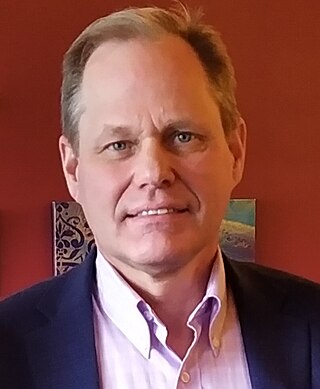
The 2021 Anchorage mayoral election was held on April 6, 2021, to elect the mayor of Anchorage, Alaska. As no candidate received at least 45% of the vote in the first round, the two candidates with the highest vote share, Forrest Dunbar and Dave Bronson, advanced to a runoff on May 11. The election was officially nonpartisan. Incumbent independent acting mayor Austin Quinn-Davidson, first appointed to the position in October 2020, was eligible to run for reelection to a full term, but did not run. The deadline to register to vote in the first round was March 7. Mail-in ballots were sent out starting on March 15. On May 21, 2021, after a narrow loss, Dunbar conceded the race to Bronson. Bronson was sworn in on July 1.















